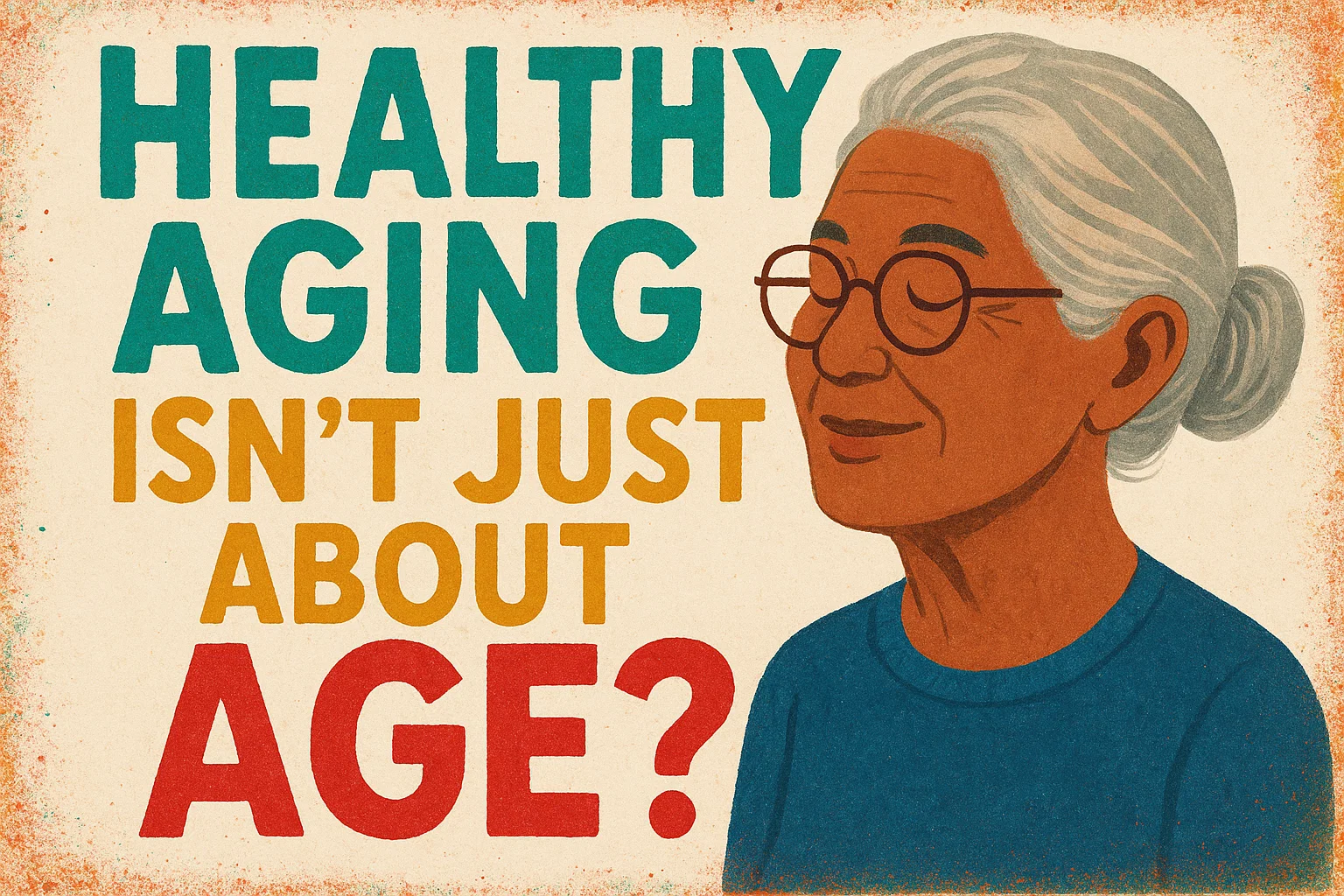Rethinking age as a sole marker
Recent research across Latin America and the Caribbean shows that chronological age explains less than 20 percent of differences in cognition and daily function among older adults. Instead, factors such as social determinants of health, mental wellness and cardiometabolic status each wield greater influence on whether individuals remain sharp and independent . This paradigm shift urges us to broaden the conversation: healthy aging isn’t just about age, but about the environments and supports that nurture resilience.

Social foundations: Education and community ties
Educational attainment and socioeconomic resources emerged as foundational pillars. Individuals with more schooling and stable incomes have better access to preventive screenings, nutritious foods and stimulating activities. Moreover, strong social networks, family bonds, neighborhood groups and faith communities, buffer stress and foster cognitive engagement. Efforts to bolster adult education and community centers can therefore yield substantial gains in preserving independence and quality of life.
Mind and mood: The power of psychological well-being
Symptoms of depression and anxiety proved the single strongest predictors of decline in both mental function and daily living skills. In many regions, stigma and uneven service distribution limit mental-health support. Integrating basic screening into primary care settings, training community health workers in psychosocial interventions and creating peer-led support circles can disrupt the downward spiral of isolation, low mood and functional impairment.
Cardiometabolic health: Beyond individual responsibility
High blood pressure, diabetes and obesity significantly erode functional ability, especially where these conditions are most prevalent. Culturally tailored initiatives, like mobile clinics offering glucose monitoring and community cooking workshops that revive traditional whole-food recipes, can help reverse these trends. Insights from metabolic research highlight that synchronizing meal timing, such as through intermittent fasting, can improve insulin sensitivity and bolster cellular repair processes, offering another lever for resilience.
Behavioral drivers: Lifestyle as a modifiable force
Beyond structured programmes, everyday habits shape long-term outcomes. Regular physical activity, whether through group dance classes, community gardening or neighborhood walks, enhances muscle strength, balance and social cohesion. Smoking cessation and moderate alcohol intake also contribute to reduced inflammation and improved vascular health. Initiatives that weave movement into cultural traditions amplify engagement and sustainability.
Policy and environment: Crafting age-friendly societies
Country-level variations in aging outcomes reflect differences in policy, infrastructure and cultural practice. Urban designs that include green spaces, pedestrian-friendly streets and accessible public transport support daily movement and social interaction. Fiscal measures, such as subsidies for fresh produce and taxation on sugar-sweetened beverages, can shift population diets toward cardiometabolic health. By fostering environments that make healthy choices the easy choices, policymakers can elevate resilience for all.
Innovations and future directions
While social and behavioral interventions address current realities, emerging therapies promise to complement these efforts. Senolytic compounds, designed to clear senescent cells that accumulate with age, are under active investigation as potential boosters of tissue repair and function. Though still in early stages, this work hints at a future where targeted treatments join community and lifestyle strategies to sustain vitality.
Empathy and cryopreservation options
When faced with a life-limiting diagnosis, even the most robust social and health supports can feel insufficient. We understand the emotional and existential weight of such news. Cryopreservation is not a cure, but an opportunity: preserving the body, and the intricate architecture of the brain, at legal death, waiting for future advances that may allow restoration. If you’d like to learn more about how this process works and explore whether it aligns with your hopes and values, we’re here to listen, explain and support you with compassion and clarity.
About Tomorrow.bio
At Tomorrow.bio we are dedicated to advancing the science of cryopreservation with the goal of giving people a second chance at life As Europe’s leading human cryopreservation provider we focus on rapid high-quality standby, stabilization and storage of terminal patients preserving them until future technologies may allow revival and treatment.
Our mission is to make human cryopreservation a reliable and accessible option for everyone We believe that no life should end because current capabilities fall short.
Our vision is a future where death is optional where people have the freedom to choose long-term preservation in the face of terminal illness or fatal injury and to awaken when science has caught upInterested in learning more or becoming a member
📧 Contact us at hello@tomorrow.bio
🌐 Visit our website www.tomorrow.bio
🤝 Schedule a call with our team Book a consultation
References: Santamaria-García, H., Sainz-Ballesteros, A., Hernández, H., Moguilner, S., Maito, M., Ochoa-Rosales, C., Corley, M., Valcour, V., Miranda, J. J., Lawlor, B., … & Ibañez, A. (2023). Factors associated with healthy aging in Latin American populations. Nature Medicine, 29, 2248–2258. https://doi.org/10.1038/s41591-023-02495-1



